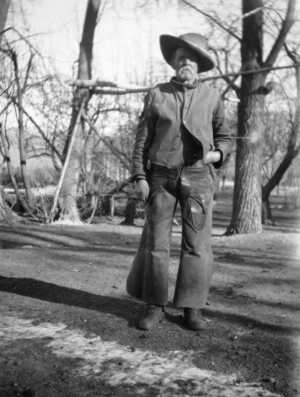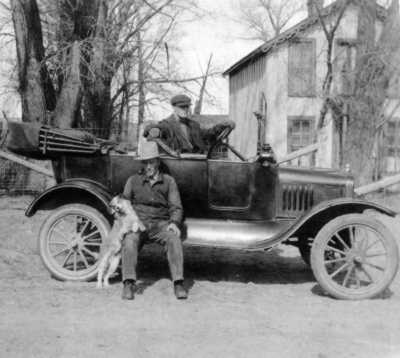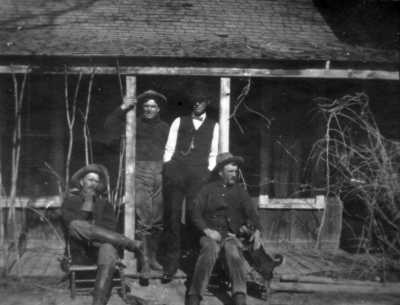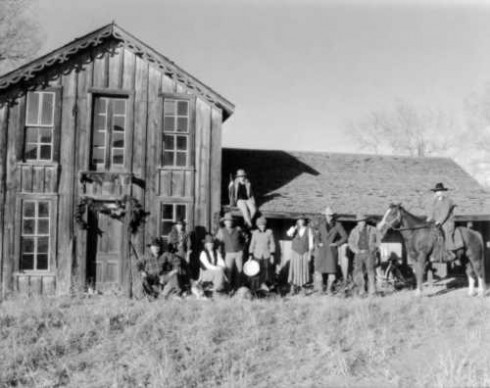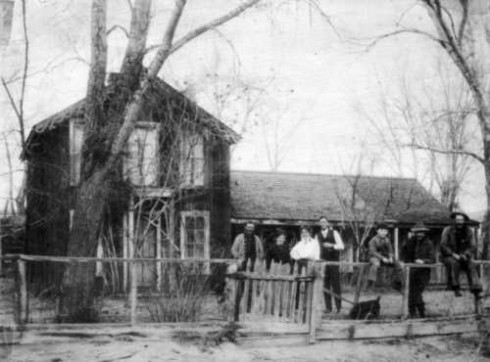Article by Betty Plotz
Local History – March 2003 – Colorado Central Magazine
WENDELL HUTCHINSON is a man with a sense of place. He was born on the Hutchinson Ranch in 1924 and has lived there for most of his life.
And this year, Colorado Preservation Incorporated (CPI) has recognized that place.
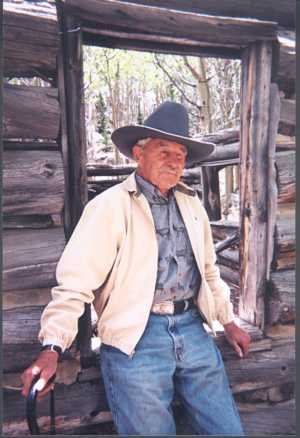
In February, the Hutchinson Homestead Complex, which lies between Salida and Poncha Springs on the north side of U.S. Highway 50, was one of five sites out of 51 entries, to make CPI’s prestigious Most Endangered Places list of 2003. The purpose of the list is to raise awareness about Colorado’s threatened historic, archæological, and cultural resources. The sites will receive CPI’s assistance in developing statewide and community support to help save and preserve them for the future.
Several people from the Salida area attended the CPI luncheon in Denver to see Dr. Wendell Hutchinson accept his award from Channel 4’s Larry Green.
Hutchinson, more commonly called “Hutch,” is a retired veterinarian from Poncha Springs and belongs to the fourth continuous generation to operate the Hutchinson ranch. The buildings and corrals in the barnyard represent a ranching way of life that was once hailed as the foundation of the west. But today that cultural foundation is crumbling from urban pressure, financial stress, modern lifestyles and drought.
After graduating from Salida High School in 1942, Hutchinson made a brief sojourn to Fort Collins to attend the Colorado A&M School of Veterinary medicine.
Then he married Mary Sue Swallow, daughter of another prominent local family. The Swallows once ranched the land across from McDonald’s in Salida, and had another ranch in Adobe Park. They also owned several Salida properties (and observant readers may recall the frontispiece of the Swallow building at the corner of 4th and F streets).
After Wendell completed his studies in Fort Collins, he and Sue spent the year of 1951 in Gunnison to get some vet practice. But the fields of home beckoned and “Hutch” was content, indeed blessed, to return home and stay, running the ranch and his vet practice.
WHILE MANY of the original ranches in the Arkansas Valley have been dismantled because of financial pressures, Hutch has held on to his family ranch by subsidizing the operation with his veterinary income. But now, as Hutch would say, “The vultures are hovering.”
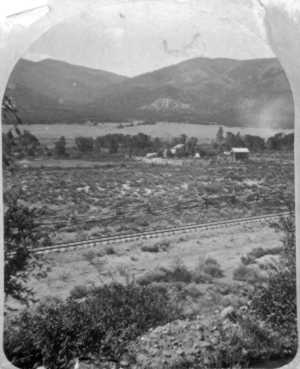
The vultures in this case include developers, planners, and citizens who want to turn the historic Hutchinson Ranch into something else. Over the years, there’s been a lot of talk about whether this very visible property along Highway 50 should host housing, commercial development, a golf course, or a park/recreation area, but Hutch would like to see this last piece of open space between Salida and Poncha Springs remain a ranch.
Although Hutch has found CPI’s interest in his family homestead gratifying, the Historic Homestead Complex encompasses a mere five acres of the Hutchinson ranch. If all goes well, the plan is to preserve the old homestead and outbuildings and use Hutch’s extensive collection of tools, photos, diaries, letters and other memorabilia to furnish a museum and cultural center. But the fate of the rest of the ranch is unclear.
The property is already a mere fragment of what it was in those days before the railroad, Salida, and Highway 50 arrived.
[InContentAdTwo]
JOSEPH SYKES HUTCHINSON, Wendell’s great grandfather, came to Colorado in 1866 to make something of his life after getting shot in the leg during the Battle of Vicksburg in the Civil War. Joseph suffered from this wound his entire life, and it gave him a peculiar gait that was uniquely his own.
Upon arriving in this region, Joseph began prospecting for gold in Cache Creek, near Granite. But eventually he fell into the cattle business and supplied the lucrative markets of the Oro City gold fields, and later, the crews building the railroad. (Oro City was an ancestor of Leadville, slightly south of the present-day city.)
At that point, Joseph met an attractive young woman named Annabelle McPherson, daughter of the postmaster in Helena, an extinct settlement south of Johnson’s Village. Annabelle was a seasoned “mountain girl,” having moved west six years earlier with her family from Sparta, Wisconsin.
Her family had tried their luck in the Oro City mines for several years before moving south to the Granite area. Then, the Cache Creek gold rush “played out” and the McPherson family moved south again. This time they established a post office and general store in Poncha Springs.
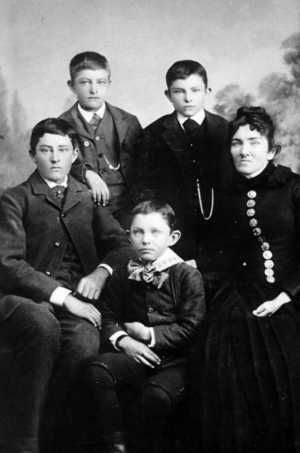
The tiny community at the base of Poncho Pass, as it was called at the time, was then named South Arkansas because it was situated on the banks of the southern tributary of the Arkansas River. It was ideally located near the hot springs on Poncho Pass and was a natural meeting, camping, and stopping place for both Indians and whites.
WHEN JOSEPH AND ANNABELLE married in 1868 they bought a homestead about three miles east of South Arkansas. By the 1870s, the Hutchinson ranching operation had grown to include 5,000 head of cattle that ranged over meadows in the San Luis Valley, Marshall Pass, South Park, Leadville, and Westcliffe. There were no fences or grazing laws at the time, so the cattle were simply moved to where feed could be found.
Joseph Sykes Hutchinson served as a representative in the territorial legislature, and when Colorado became a state in 1876, he was elected to the Colorado General Assembly.
Annabelle and Joseph had four sons. The oldest Hutchinson boy, Art, was a historian and author who wrote about the Indians he remembered seeing on the ranch when he was young. Some of Art’s stories about life in early Colorado appeared in magazines, and his accounts also inspired some of the material in Under the Angel of Shavano, a local history book written by Wendell Hutchinson and the elder George Everett.
“I’ve seen a cavalcade…a mile or so in length, the bucks along on their horses, the squaws on theirs and the papooses where babies would be in those backboards, while a two- or three-year-old would be sitting on top of a pack like a little monkey,” Art wrote.
About 25 or 30 Indians camped most of the summer on Poncho Pass. “The white settlers were more or less acquainted with most of the Indians as they were … in contact with them all the time. They tried to keep on good terms with the Indians as you never knew when an outbreak might start. Father traded horses with them taking the worst of the bargain to keep on good terms.”
Art remembered his father trading a good sorrel saddle horse for a “little old split-eared Indian pony. This trade was with [Chief] Shavano himself. This is what you would call diplomacy in present day dealings.”
Annabelle said the Indian squaws would come to the house and sit on the porch “in a circle and jibber away” until she’d have to tell them to “vamoose.” Annabelle was known to take after the braves with a broom when they got too familiar with the household.

The government distribution of commodities for the Indians took place at the Burnett Ranch, just west of Poncha Springs. (Dennis and John Hoover own that property today.) Indians would often set up camp in the valley in August to wait for the distribution of supplies in October.
IN 1868 the Little River Valley was extremely isolated. The road to Cañon City was not yet built and the road to Denver went over the Ute Trail to the North, through South Park. Salida was not founded until the coming of the railroad in 1880, but small settlements dotted the Arkansas River from Oro City to South Arkansas.
At this time people in the area established an election precinct with boundaries from Brown’s Creek on the north, to the top of the Arkansas Hills east of Salida, to Poncho Pass on the south and west to the Utah border. Art Hutchinson wrote, “Every man voted and there were 8 votes.”
The Hutchinson homestead was built in 1872-73, and was the first frame house in the valley constructed with milled lumber. The four Hutchinson boys, Art, Bailey, Harold (Wendell’s grandfather), and Joseph Mills spent their time irrigating and cutting hay in the summer and feeding cattle and hauling wood in the winter. They were constantly moving the herd to new grazing sites.
Haying was done by hand, with the help of horses. First, they would cut the hay with a scythe and put it in windrows. Then it would be shocked or put in piles the size an average man could lift. It was then pitched onto horse drawn wagons and taken to the stack yard where it was transferred to a large haystack by using an A frame and a harpoon fork attached to a cable. Haying would start in early July and usually finish in mid-August at the earliest. Often haying would continue until Hallowe’en.

Annabelle ran the household, sold eggs, and occasionally dressed out chickens or turkeys for people in town. She taught Sunday school at the Presbyterian Church in Poncha Springs for 20 years.
Joseph died at the age of 45 from a brain tumor, leaving Annabelle and the boys. Art and Bailey stayed with Annabelle on the ranch while brothers Joe and Harold went to work on the railroad. Joe became county sheriff in 1917 and served until 1927.
Harold married Grace Green and they had a baby, Mills, born in 1898. Mills Hutchinson, Wendell’s father, was named winner of the Denver Post’s “Most Beautiful Baby” contest at the turn of the century. However, Harold had a wandering eye and Grace left him, and Poncha Springs, to become administrator of nursing at the hospital in Victor, Colorado. When Mills was about eight years old, his father remarried and eventually moved to Pueblo, but Mills stayed on at the ranch to help his grandmother, Annabelle, and his uncles, Art and Bailey.
Annabelle died in 1916 when Mills was 18 years old. Soon after, Mills met Myrtle Burkhart at a dance in the Poncha Springs schoolhouse. She was from Harvard, Illinois, and was out here visiting her uncle, Charlie Burkhart, who was a conductor on the railroad.
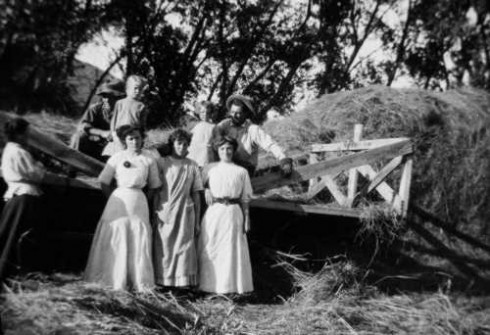
By this time, a one-lane dirt road passed in front of the homestead. Large cottonwoods grew on both sides of the road and across the road from the house there was a gate into the southern pastures. The Indians were gone, but much of the work was still done manually with the help of horses. Fences changed the grazing process, and permits were issued by the Forest Service to allow specific numbers of cattle to graze in specific areas. The homestead had no electricity, no running water, and no indoor plumbing — but it did have an outhouse.
At the eastern edge of the present Hutchinson property there is a parcel of land that is now owned by the City of Salida. Christmas trees are recycled at the site in early January and the city collects water from Kings and Sand gulches there. But toward the beginning of the century this property was called “the fairgrounds” and it had a racetrack and a grandstand. There was a tall wooden fence along Highway 50 so people would have to pay admission to look in on events, which in the 1920s included bucking contests, horse races, and roping.
Baseball was a popular pastime. Art played right field, Bailey was catcher and little brother, Joe, was in the outfield with the Poncha Springs Orioles baseball team. Another teammate Harold Woods, went on to become a pitcher and starred in the old Western League which included Colorado, Montana, Wyoming, Idaho, and Canada.
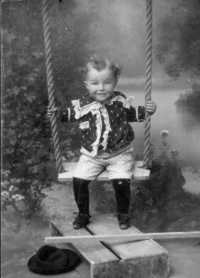
Uncle Art was the gregarious brother who loved to visit. Art played cards and the guitar and religiously wrote in his journal. Bailey was the quiet one who loved to go off to the mountains to check the cattle and fix fences. They worked well together.
In the summertime, five or six men were hired to help put up hay. After Annabelle’s death, the two brothers hired cooks and housekeepers — often the wives of ranch hands or a neighbor — and many men stopped to work at the ranch just to have something to eat.
One cold winter day in 1923, Uncle Bailey and Mills were riding along the South Arkansas River when they saw smoke along the riverbank. Upon investigation, they found a man lying on the ground by a fire, trying to get warm. They invited him to the house for some food and he stayed on for the rest of his life. He was known to Wendell as Old Dad Stinson, and he was rumored to have killed a couple of revenue officers in Kentucky for breaking up a still. Stinson worked for room and board plus two pairs of overalls, a shirt, and shoes. He would occasionally take off for a few days to go gold mining, saying, “I’m off to the Klondike.”
The homestead was getting crowded, so Uncle Art built a log cabin out back for himself — and an occasional visitor or ranch hand.
When Mills and Myrtle got married, Mills built a white house to the east of the barnyard. Wendell was born in this house in 1924. Jake came along soon after and 10 years later, Joe was born. At that point, the ranch was l200 acres with 600 cattle.

In the 1930’s Highway 50 was widened and things started getting busy. The hot springs pipeline from Poncha Springs to Salida was built as a Works Progress Administration project in 1936. The line went through ranch property in exchange for a hot water tap.
Uncles Art and Bailey never married, so Wendell, Jake and Joe had the best of two worlds. They had a comfortable home and family life but could escape the boredom by going next door to the “men’s club” at the homestead.
The boys knew it was time to get up when they looked east toward the Starbuck’s Dairy (near Wal-Mart) and saw the light turned on in the barn for milking. There were five cows to milk; wood and coal to be gathered; and teams of horses to be harnessed before breakfast.
The boys’ father, Mills, often worked on the narrow- gauge railroad to supplement the family income. As the passenger train to Gunnison passed the ranch at 7:20 in the morning, Mills would have the engineer blow the whistle. Then Wendell and Jake knew it was time to put on their coats and start walking the mile over to the Valley View School on County Road 140.
The dirt road in front of the house was paved by the late 1940’s. And in 1960 the highway was expanded to include five lanes that completely split the ranch into two pieces. In an effort to provide a way to move cattle from one side of the ranch to the other, the Colorado Department of Transportation installed a six-foot diameter culvert under the road, plugging up a natural spring that had been used for the household since the ranch was founded. The root cellar built into the hillside was also demolished.
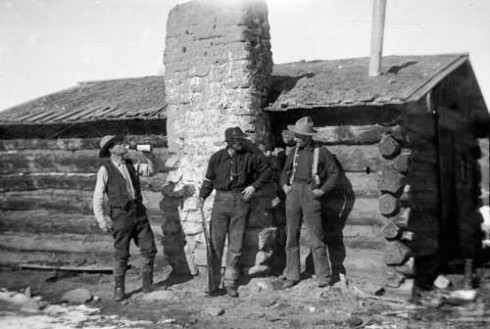
Lou and Blanche Swallow were old family friends of the Hutchinsons, and they often helped each other with roundups, branding, haying, and threshing. Wendell remembers the Swallow family driving over; the adults would go inside to visit, but their three girls would sit in the car singing songs in harmony. It is little surprise that he fell in love with the oldest Swallow daughter, Mary Sue.
Wendell and Sue were married in l949 and had three children, Art, Andy and Lisa. All of the children are now adults, living in different cities. Art and his wife live in Denver, and have two daughters who will soon graduate from college. Andy and his wife, Mary Ann, live in Durango. And Lisa lives in Anchorage, Alaska with her husband and two small boys. Sue passed away in 1997.
The homestead house has been unoccupied since the death of Uncles Art and Bailey in l951. It was built on a marginal foundation and the floor inside has rotted away in several places. Annabelle’s lilac bushes and the apple orchard still exist on the east side, along with the outhouse and the ditch flowing through the yard.
The outbuildings and main house show the evolution of cattle ranching from 1868 to the present. Aside from a new barn and haying equipment, the barnyard is the same as it was at the turn of the century, and the house has never been remodeled. The complex includes the homestead house, granary, saddle barn, Uncle Art’s cabin, blacksmith shop, root cellar and calving shed. There is also a chicken house, a horse barn, and a milk cow barn. It is not only a glimpse into the past, but also an indication of the present that provides hope for the future.
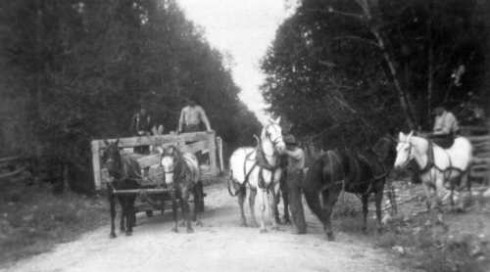
Katy Grether, under the umbrella of Salida-area Parks, Open-space & Trails (SPOT), nominated the homestead for the “Most Endangered Places” designation. She has been working closely with the Hutchinson family to revitalize the historic buildings in an effort to preserve the open space and ranching heritage of the Little River Valley. The award indicates statewide recognition of the historical value of the property. Grether said:
“This means that many of Colorado’s most important historians and preservationists believe the Hutchinson Homestead has keen relevance to the State’s history, and it is worthy of extraordinary efforts to preserve it for future generations.”
Amen.
Betty Plotz was born in Denver and moved to the mountains in 1964 to attend Western State College. She lived in Leadville before moving to Salida in 1979. She graduated from Colorado State University in 2000, worked for a while as a reporter at the Mountain Mail, and now works at the Hutchinson Ranch.
